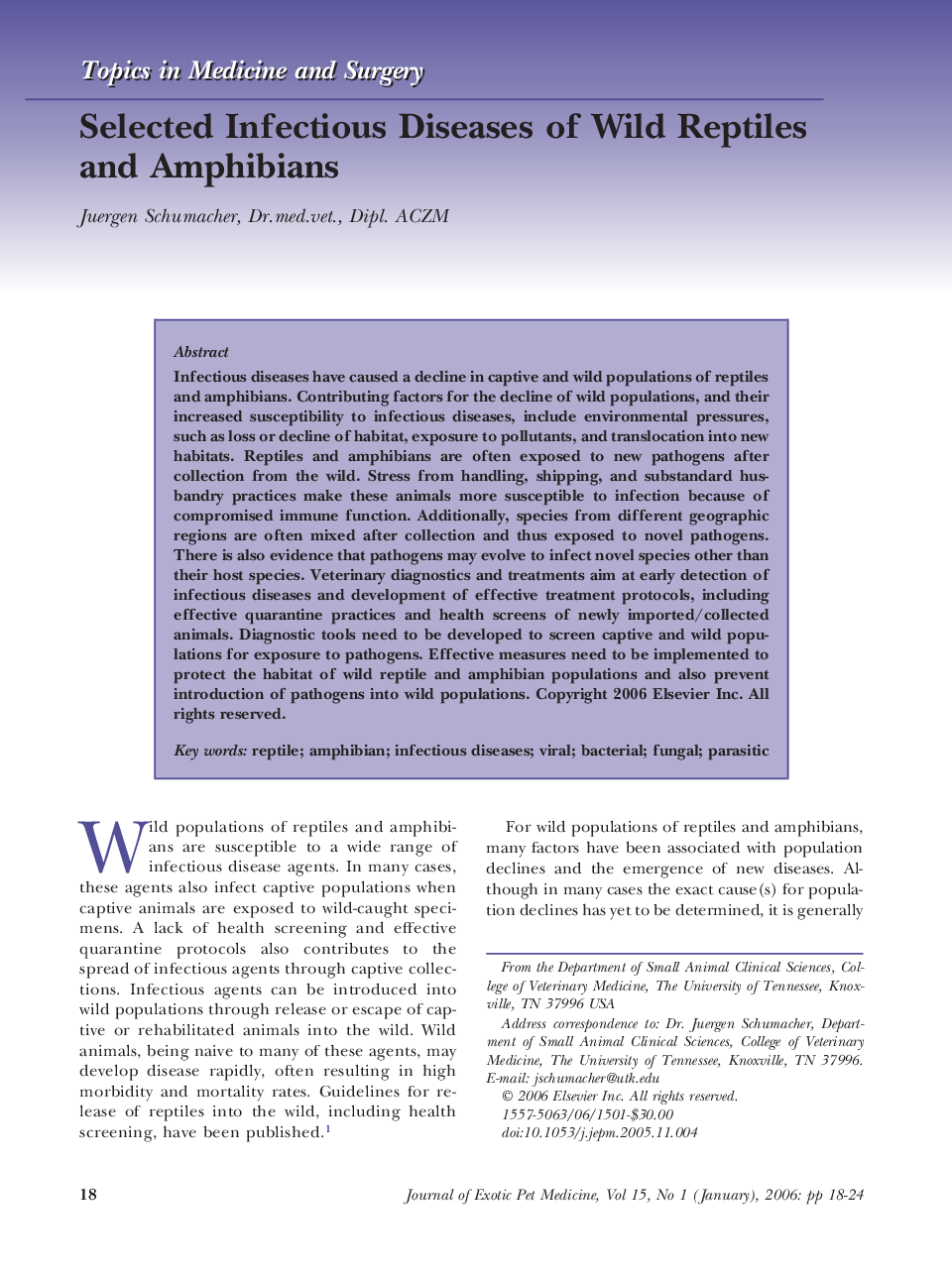| Article ID | Journal | Published Year | Pages | File Type |
|---|---|---|---|---|
| 2397529 | Journal of Exotic Pet Medicine | 2006 | 7 Pages |
Infectious diseases have caused a decline in captive and wild populations of reptiles and amphibians. Contributing factors for the decline of wild populations, and their increased susceptibility to infectious diseases, include environmental pressures, such as loss or decline of habitat, exposure to pollutants, and translocation into new habitats. Reptiles and amphibians are often exposed to new pathogens after collection from the wild. Stress from handling, shipping, and substandard husbandry practices make these animals more susceptible to infection because of compromised immune function. Additionally, species from different geographic regions are often mixed after collection and thus exposed to novel pathogens. There is also evidence that pathogens may evolve to infect novel species other than their host species. Veterinary diagnostics and treatments aim at early detection of infectious diseases and development of effective treatment protocols, including effective quarantine practices and health screens of newly imported/collected animals. Diagnostic tools need to be developed to screen captive and wild populations for exposure to pathogens. Effective measures need to be implemented to protect the habitat of wild reptile and amphibian populations and also prevent introduction of pathogens into wild populations.
